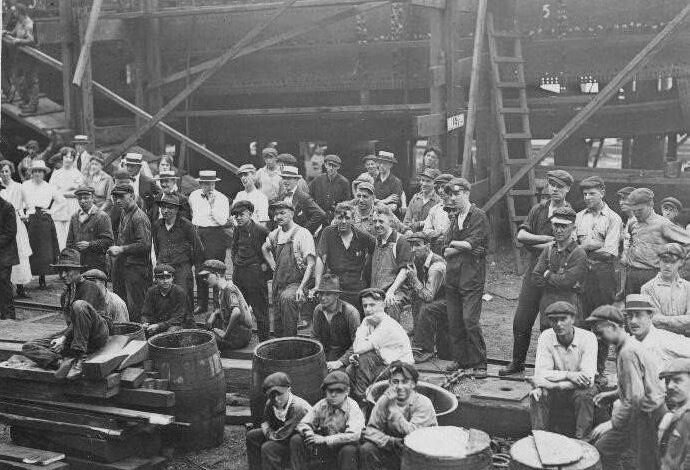Staten Island Shipyards: Some History


 The scarcity of timber following the American Revolution somewhat diminished the Staten Island shipbuilding trade. After the war, the U.S. shipbuilding industry thrived because of low-cost construction made possible by cheap timber.
The scarcity of timber following the American Revolution somewhat diminished the Staten Island shipbuilding trade. After the war, the U.S. shipbuilding industry thrived because of low-cost construction made possible by cheap timber.
The growth of the fishing and oystering industries following the War of 1812, and later the expansion of recreational boating industries, brought a revival in wooden boat/ship construction and repair.
By 1855, shipwrights in Tottenville (particularly in an area called Unionville), many of Scandinavian descent, produced sloops, schooners, propeller yachts, and coal barges. At one time stores stocked Norwegian newspapers because Staten Island had so many Scandinavian ship carpenters.
The William H. and James M. Rutan Shipyard built nearly 100 sloops and schooners. Jacob Ellis operated a shipyard near the foot of Tottenville’s Main Street. At the south side of the Ellis yard stood a blacksmith shop (A.E. Rolles) where Eilis’s vessel fittings were probably wrought.
Before mid-century, sailing lofts, which later manufactured building awnings, established services on the north shore. Rope walks appeared in Rossville and Richmond in the late 1850s.

 One of Ellis’s shipwrights, Chris Brown, eventually opened a business at the foot of Amboy Road, later building the oceangoing tug Cyclops, renowned for towing huge rafts of lumber from Nova Scotia to New York.
One of Ellis’s shipwrights, Chris Brown, eventually opened a business at the foot of Amboy Road, later building the oceangoing tug Cyclops, renowned for towing huge rafts of lumber from Nova Scotia to New York.
By 1880, Staten Island had seventeen shipbuilding firms, eight in Tottenville. These latter eight yards included eight marine railways. Described by Henry Hall in 1880, “this is a fishing locality, with coal depots in New Jersey, and the work is largely for smacks (fishing), tugs, and coal barges.”
From the middle to late nineteenth century, shipbuilding industries played a major role in Staten Island’s maritime economy. Staten Island shipbuilding dramatically increased during World War One.
Stephen Cossey operated a 20-acre plant that during its 22-year history constructed 1,149 boats. The $30,000,000 industry produced lighters, tugs, dredges, coastwise vessels, and dry docks.
More than anything else Tottenville celebrated its shipyards and the quality and quantity of work done in them. The yards planned and built tugs, schooners, oyster boats, sloops, yachts, and all conceivable craft of ordinary tonnage, besides the work of overhauling, rebuilding, refitting, altering, etc. that is always ongoing. Competent mechanical work gave Tottenville shipyards an excellent reputation all along the coast.

 Staten Island’s shipbuilding tradition continued into the twentieth century. The Staten Island Shipbuilding Company (established 1895) is historically known for its steel hulls and diverse designs.
Staten Island’s shipbuilding tradition continued into the twentieth century. The Staten Island Shipbuilding Company (established 1895) is historically known for its steel hulls and diverse designs.
The early hulls built by the yard included tugs, carfloats, scows, barges (oil and coal), yachts, schooners, ferryboats, steam and derrick lighters, dredges, drill boats, and in recent years, mine sweepers, cargo freighters, and tankers.
This essay is excerpted with minor editing for clarification from Target Investigations in Connection with the New York and New Jersey harbor Navigation Project, May 2004, prepared for the U.S. Army Corps of Engineers, New York District, by Andrew D.W. Lydecker and Stephen R. James, Jr. of Panamerican Consultants, Inc.
Illustrations, from above: Staten Island Shipbuilding Company shipbuilding team, early 1900s photo by Paul Thompson (Staten Island Museum); A.C. Brown & Sons Shipyard in Tottenville (NYPL); and a section of the Staten Island Ship Building Company’s Plant in Mariner Harbor.
Source link




